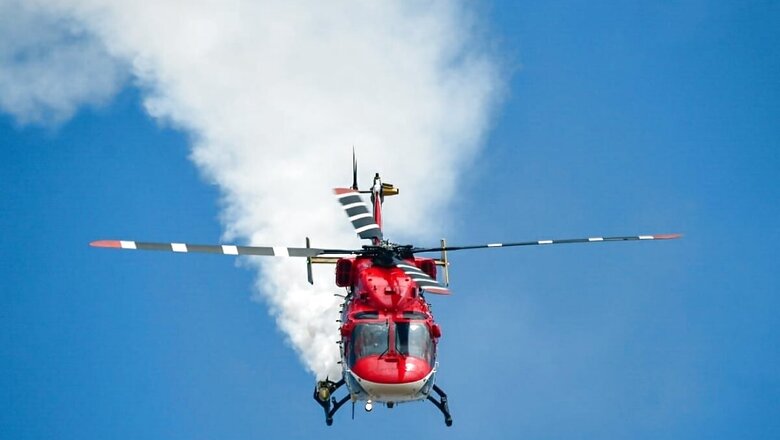
views
The Indian government notified a second ‘import negative list’ on 31 May, albeit this time under the feel-good nomenclature of an ‘indigenisation positive list’. A rose by any other name would smell the same. Despite negative lists, grand plans, and new wine in old bottle slogans like ‘Atmanirbharta’ (self-reliance), the government is yet to put pen to paper, or indeed articulate anything more specific than anodyne tweets and press releases, just what its plan for defence modernisation really is.
If You Can’t Dazzle Them with Brilliance…
The lists themselves do little to help, at least in part because of how disingenuous they are. For instance, the second list begins by closing the door on a “Helicopter with All Up Weight (AUW) <3.5Ton (Single Engine Land Variant)”. This clearly means nothing functionally similar to Hindustan Aeronautics Limited’s (HAL) Light Utility Helicopter (LUH) can be imported. However, the needlessly specific terminology leaves the door open to similar twin-engine helicopters such as the Russian Ka-226T, which has been under consideration since 2003. It also offers no clarity on naval helicopters, even as the Indian Navy and HAL spar over whether to import naval utility helicopters or adapt existing HAL products for the requirement.
The other major flaw of the negative lists, at least thus far, has been their inability to force actual action on domestic procurement. While some items on the list, such as next generation corvettes and wheeled armoured vehicles, certainly suggest that the direction for these acquisitions has been firmed up in the minds of planners, there has been little forward movement in actual contracting. In other instances, it is clear that items have made the list only to close off parallel sources of supply via import, at best only marginally affecting domestic industry, either due to low value or low volume of production. In fact, it has often proved easier and cheaper to procure consumables and spares through the foreign Original Equipment Manufacturer (OEM) or third parties, in which case military readiness will be sacrificed for questionable domestic gains.
Given the devastating impact of COVID-19 on the economy, all government expenditure, including on defence, will see cutbacks. But given the lack of access to, and frustratingly high cost of capital in India, the one thing the domestic defence industry needs now more than ever is visibility. It also happens to be something that costs the government nothing to provide, even within spending constraints. Yet, here is a curious situation where despite muscular rhetoric on defence, and despite claiming to support indigenous industry, both the military and industry are given short shrift.
Military Modernisation is on Life Support
A fatal MiG-21 Bison crash earlier in the month threw the perilous state of the Indian Air Force fighter fleet into sharp relief once again. But this is not new. The looming fighter crisis used to be talked about in the future tense some 15 years ago, when the Medium Multi-Role Combat Aircraft (MMRCA) competition was gathering steam. Discussions did not change, only grew more anxious when that procurement programme went off the rails in the 2010s. Even when the Modi government announced (and later contracted) 36 Dassault Rafale fighters in 2015, it was clear the move was at best a stopgap, a band-aid on a gaping wound. The only thing that has changed is that the IAF’s force levels are now debated in the present tense, with the combat fleet being the smallest since the 1971 war. It is not as though there are no options, even if only near-term fixes, but even these have seen no action.
The Army, now committed on two mountain fronts, has made no headway in inducting new howitzers. This is the case despite the acknowledgement that artillery was perhaps the single most valuable piece of battlefield equipment the last time an actual shooting war was fought in the Himalayas. Meanwhile, less than a year after putting 155 millimetre/L52 guns on the negative list with effect from December 2020, the Ministry of Defence (MoD) has reversed course and extended that date to December 2021. In this bureaucratic sleight of hand, which was intended to buy time to decide between an Israeli bid and the domestic alternative for the umpteenth time, it is the Army, and the soldiers on the border, who must make do without the crucial support of indirect fire.
The situation is not any better at sea either. The Navy’s ambitious submarine plans have been hanging fire since 2010, with requests for information (RFIs) and requests for proposal (RFPs) bouncing between the Navy, the MoD, and even the CCS, without decision. Like the IAF’s fighters, the Navy’s helicopter woes have also been given the band-aid treatment, with an off-the-shelf order for 24 US-made MH-60R multirole helicopters in 2020. Again, this ignores the dangerous reality that the Navy still operates a utility helicopter design that dates back to 1960, and that its requirements for utility and missionised rotorcraft are in the hundreds, not a few dozens. Neither the service itself, nor the mandarins at South Block have displayed any flexibility or indeed agility in plucking low hanging fruit to solve these issues.
Instead of pretending all will be well and acting as though a few import negative lists are the cure to all that ails the cause of military self-reliance, perhaps it is finally time that some serious thought and action went into this problem.
This article was first published on ORF.
Read all the Latest News, Breaking News and Coronavirus News here.
















Comments
0 comment